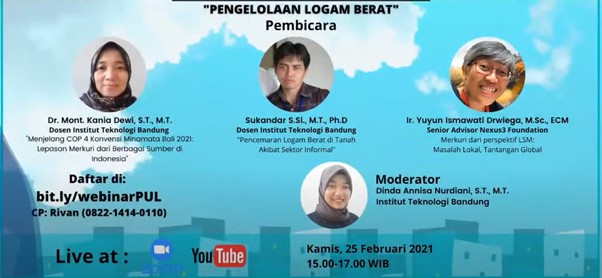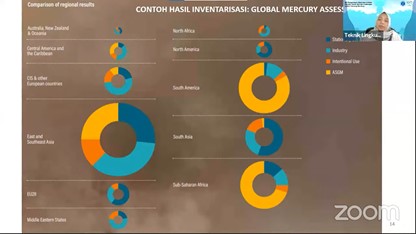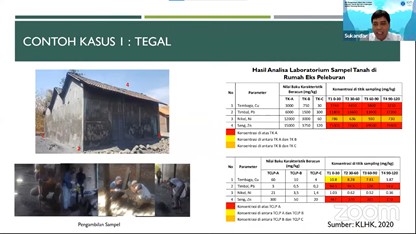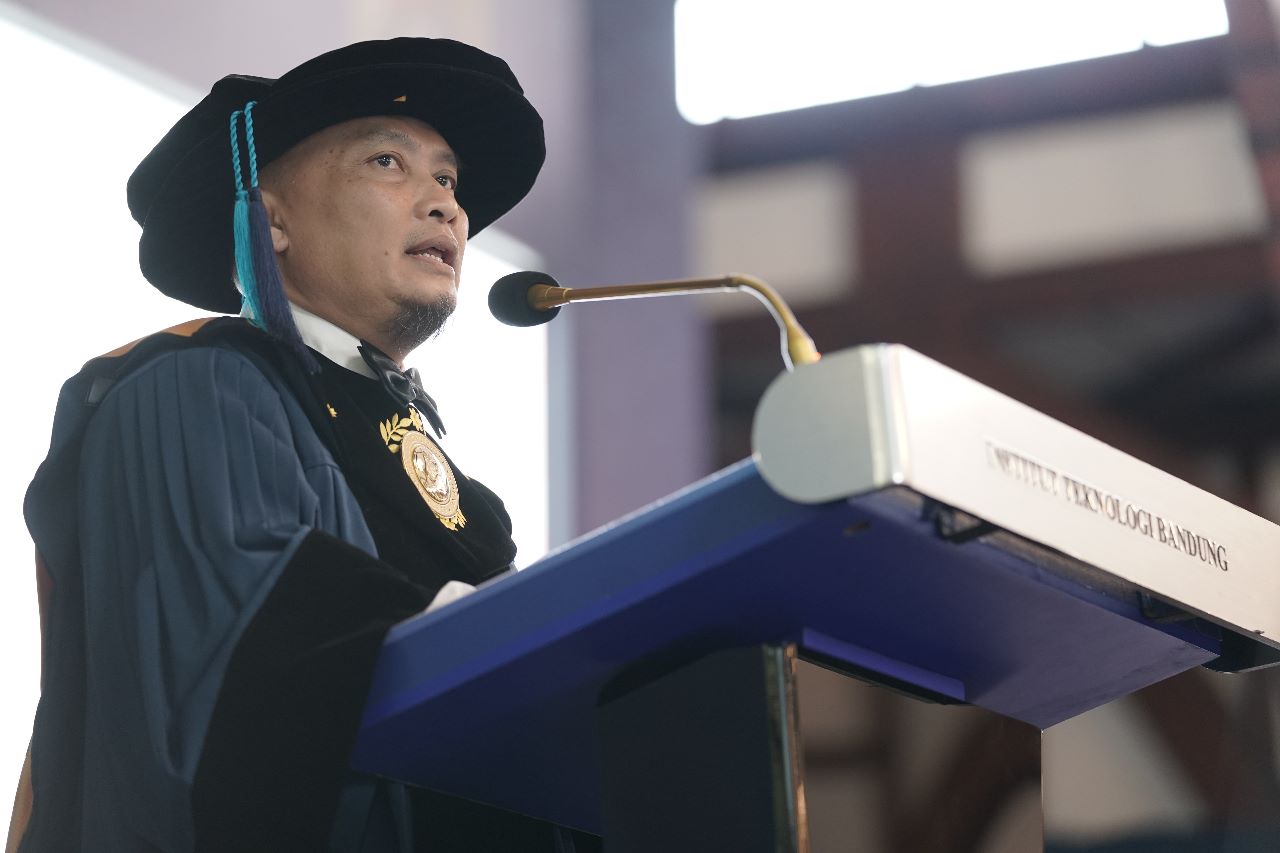Heavy Metals and its Effects in Environment
By Adi Permana
Editor Adi Permana

BANDUNG, itb.ac.id — Heavy metals are widely used in various human activities, such as the metal industry, agricultural industry, and fuel additives. If we do not appropriately manage those metals, it would pollute the environment and endanger human life.
On Thursday (25/2/2021), the Air and Waste Management Research Group from the Faculty of Civil and Environmental Engineering of ITB, held a webinar entitled "Heavy Metal Management." Three speakers, namely Dr. Mont Kania Dewi, S.T., M.T., Sukandar, S.Si., M.T., Ph.D., and Ir. Yuyun Ismawati Drwiega, M.Sc., ECM, attended this Thursday afternoon webinar.
Mercury Waste in Indonesia
As the first speaker, ITB Environmental Engineering lecturer Kania Dewi said Indonesia would host the Minamata Convention. The conference is an international fact designed to protect human health and the environment from the release of mercury.

She explained that there are many sources of mercury, and it is very close to our daily environment. Mercury is neurotoxic, which is harmful to the central nervous system. More than that, mercury is also detrimental to the brain and kidneys. Unfortunately, mercury is persistent or constantly in the environment and can injure humans through inhalation of the air and through foods that contain accumulated mercury, such as fish and rice.
Kania explained, in general, there are two sources of mercury: natural and anthropogenic. Mercury that comes from nature cannot be prevented, such as mercury from volcanic eruptions. Besides, there is also mercury from anthropogenic sources or human activities.
Anthropogenic mercury is further divided into two types; mercury used accidentally and intentionally. An example of the first type is in a coal-fired steam power plant (PLTU). The plant is burning coal that emits mercury. Meanwhile, an example of intentional anthropogenic mercury comes from small-scale gold mining (ASGM). "Based on the results of a global inventory, the largest contributor to mercury is from ASGM," she stated.
Heavy Metal Pollution on Soil Due to Informal Sector
Sukandar continued with his presentation entitled "Soil Pollution by Metal Due to Informal Activities." He stated one of the sources of contamination in soil is metals. Substances such as metal slag and used batteries can pollute the environment, especially if the government does not adequately manage them.

Sukandar explained the metal contamination cases in Tegal and Jombang. In Tegal, the villagers have been working with recycled metal scraps for more than half a century. Unfortunately, people did not correctly manage the descaling and ash removal process. The burning smoke and strong odor spread over the village. The study shows that it detected high lead concentrations in residential areas.
Meanwhile, in Jombang, the contaminants scattered from metal smelting activities. According to Sukandar, the two cases were only minor cases. There are still many similar cases, even bigger ones, that have occurred in Indonesia.
Mercury in an NGO Perspective: Local Problems, Global Challenges
Yuyun Ismawati, the senior advisor at Nexus3 Foundation, delivered the last presentation related to Minamata Tragedy in Japan. According to her, Indonesia can learn a lot from the Minamata Tragedy. Moreover, the losses suffered due to mercury contamination are enormous, totaling in trillion USD.
Reporter: Zahra Annisa Fitri (Perencanaan Wilayah dan Kota, 2019)
Translator: Billy Akbar Prabowo (Metallurgical Engineering 2020)

.jpg)

.jpg)
.jpg)
.jpg)

